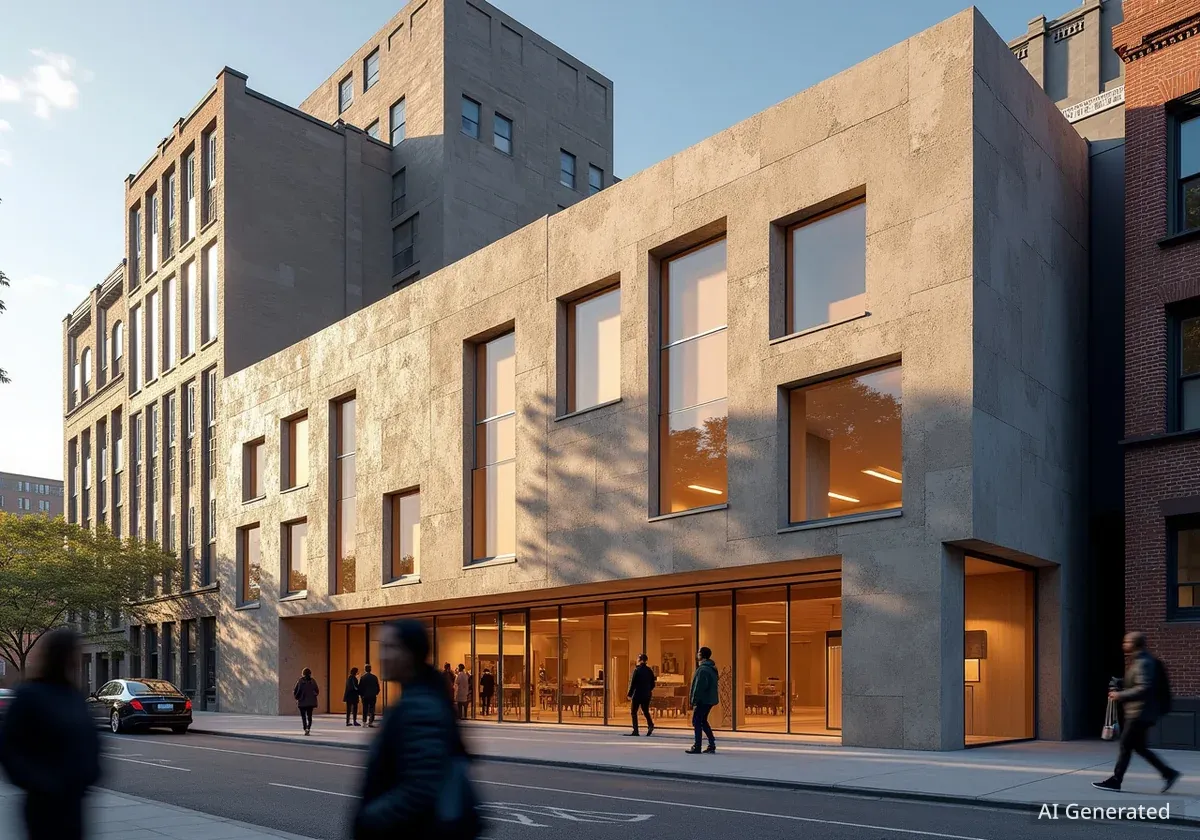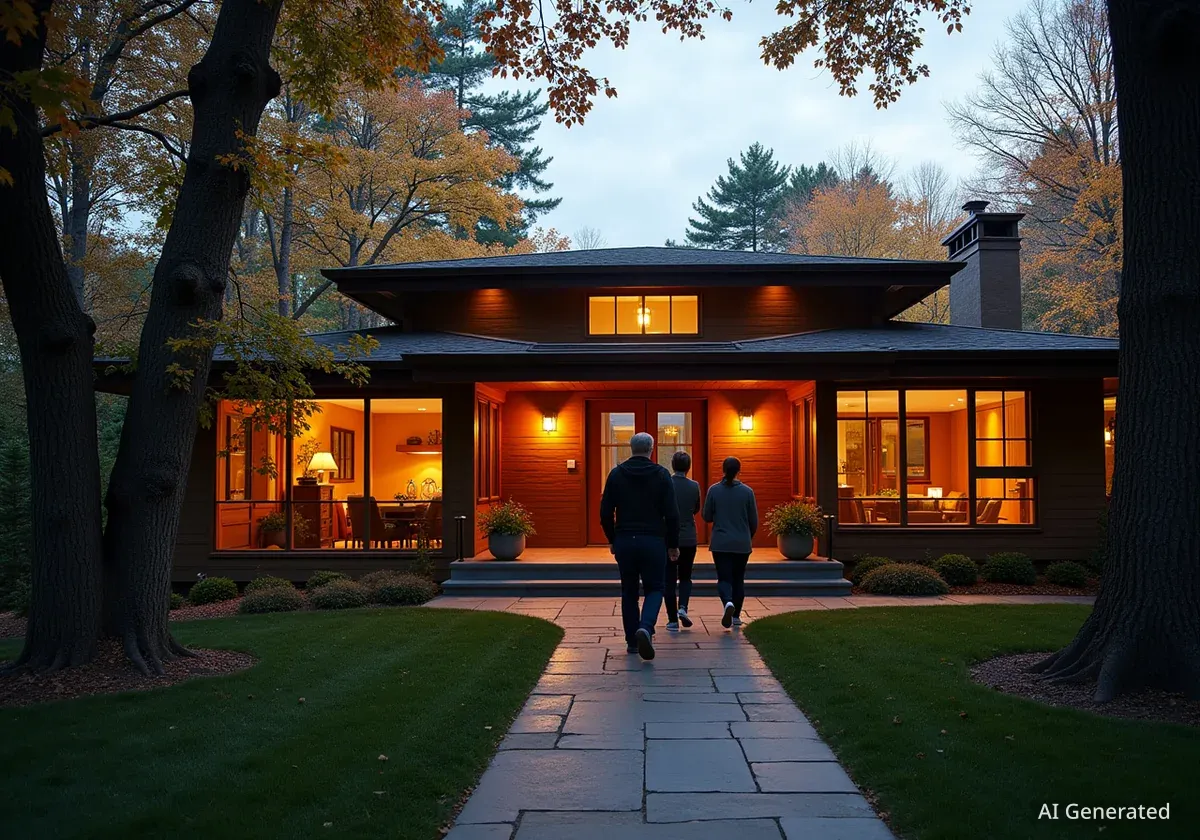Offsitewood.org has released version 2.0 of its platform, offering new digital tools to enhance offsite wood construction for architects. This update provides resources designed to help designers model, plan, and collaborate more effectively. The new features include free downloadable libraries, material e-sample viewers, an advanced panelization and framing toolbar for Revit, and a collaborative workspace for project optimization.
Key Takeaways
- Offsitewood.org version 2.0 introduces new digital tools for architects.
- A free Revit Wood Framing Toolbar is now in beta for design optimization.
- Nested Floor System Families simplify complex wood joist modeling.
- The Offsite Optimizer portal enables real-time collaboration for modular projects.
- These tools aim to make offsite wood construction faster and more affordable.
Revit Wood Framing Toolbar Now in Beta
A key update in Offsitewood.org version 2.0 is the Revit Wood Framing Toolbar. This free add-in is currently available for beta testing. It allows architects to optimize designs for offsite panelization. Users can explore how offsite wood shops will frame walls and openings directly within Revit. This eliminates the need for expensive, specialized framing software.
The toolbar focuses on providing a flexible, easy-to-use option for design studios. It helps them understand the parameters of panelized construction and the benefits of wood framing. It does not aim to replicate the full capabilities of professional framing applications. Instead, it offers a practical way to integrate offsite considerations early in the design process.
Fact: Material Estimation
The Revit Wood Framing Toolbar is compatible with Revit’s scheduling features. This allows for more reliable material estimates. These estimates can directly feed into broader studies, such as carbon footprint analysis, cost projections, and life-cycle assessments. This integration provides a holistic view of project impacts.
Beta testers can sign up now to receive trial versions over the coming weeks. This early access allows architects to help shape the tool's development. It ensures the final product meets industry needs.
Eli Gould, Wood Construction Project Manager for Quebec Wood Export Bureau, stated, "Advanced panelization holds the key to making a faster and more affordable version of many project types, especially multi-unit residential. But, like wood itself, there's a lot of regional variation, so we're really glad to have a suite of tools that can deliver industry expertise right to the architect's desktop instead of expecting them to become experts in another specialty."
Nested Floor System Families Simplify Design
Open-web joist systems are popular in construction due to their strength and ease of accommodating mechanical systems. However, wood versions of these systems were often missing from BIM marketplaces. Metal bar joists, in contrast, could be easily downloaded and modeled before a fabricator was even chosen. This created a gap for wood construction designers.
Modeling complex open-web wood systems, such as top-chord bearing trusses, was particularly challenging in Revit. These systems are often the preferred choice for multifamily residential projects. They offer higher fire ratings, increased shear capacity in exterior walls, and allow for rapid shell enclosure without needing expensive, exposed rim joist products. The new nested family addresses this issue directly.
The latest release includes a new nested family with integrated beam systems. These systems are available in both steel and glulam. This innovation makes it easier to model these complex wood structures. It also highlights the benefits of flush beams inside the building. Nic Catellier at BIMPure led the content creation for this feature. He called it "the craziest Revit family he's ever built," underscoring its complexity and utility.
Context: BIM Market Challenges
Building Information Modeling (BIM) marketplaces often lacked detailed wood components, especially for specialized systems like open-web joists. This forced architects to spend extra time modeling these elements from scratch or relying on less precise methods. The new nested families aim to standardize and simplify this process, making wood construction more competitive.
Offsite Optimizer Portal for Collaborative Design
Another significant addition in this release is the Offsite Optimizer. This online environment supports teams working on any form of offsite construction. It promotes online collaboration without requiring all team members to use a single BIM software. Traditional workflows often involve multiple file transfers between different software platforms. They can also lock users into less flexible proprietary ecosystems.
The Offsite Optimizer operates differently. It is powered by Speckle, an open-source platform that enables real-time collaboration. This means multiple contributors can review and refine a project in a shared digital space. It functions like working on a shared document or in a multiplayer game setting. This allows for iterative design and feedback before committing to final documents.
The Optimizer begins by generating a panelized enclosure layout. This layout considers regional conditions and transportation logistics. Users can then refine wall systems and compare various options. The platform integrates data layers such as snow loads, seismic activity, or coastal exposure. This allows for informed decision-making based on specific environmental factors.
Future Development
Additional features are currently under development for the Offsite Optimizer during its beta stage. These include dashboards that quantify transport logistics, carbon impact, and cost implications. This ongoing development is made possible by a group of advanced panelization manufacturers who are collaborating to establish digital standards and respond to large projects with common components.
Selected participants in the early access program will receive support from the Offsitewood.org team. This support helps them apply the tool directly to live projects. This hands-on approach ensures practical application and valuable feedback.
Advancing Smarter Wood Construction
Version 2.0 positions Offsitewood.org as more than just a reference hub. It is evolving into a practical toolkit for architects. The new resources align with existing design practices. They also open doors to modular, offsite, and sustainable approaches to wood construction. This move aims to streamline the design and construction process for timber-based projects.
For architects interested in offsite strategies, these new resources offer a low-barrier entry point. The free Revit add-in allows for modeling and quantification. The collaborative portal enables optimization and sharing. The materials library connects design intent with real-world products, particularly from Canada. This comprehensive suite of tools supports the entire design-to-build workflow.
- Free Revit Add-in: Model and quantify designs efficiently.
- Collaborative Portal: Optimize projects and share progress in real-time.
- Materials Library: Access real-world product information from Canadian suppliers.
Firms that wish to influence the development of these tools are encouraged to join the beta programs. Both the Revit Wood Framing Toolbar and the Offsite Optimizer are accessible through Offsitewood.org. Participation offers a chance to contribute to the future of wood construction technology.




